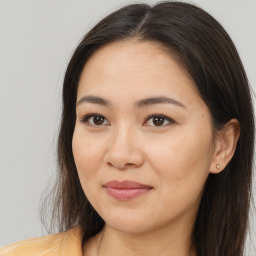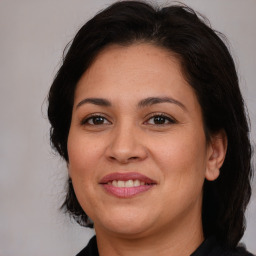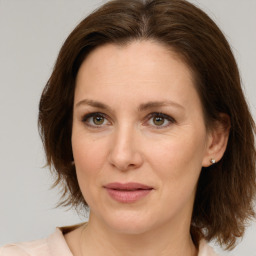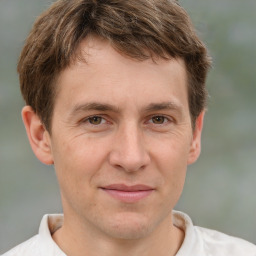This sample will let you know about:
- Discuss the selected characteristics of living cells.
- What is synthesis of proteins
Discuss the selected characteristics of living cells.
The selected characteristics of living cells are mentioned below-
Homeostasis- It is the internal environment which have main purpose to maintain stability within itself and also make changes outside the cell (Gaut and Adamala,, 2021). Cell helps in balancing the stability of the water inside the cell with respect to the quantity outside the cell.
Growth and development- Cell have some specific growth and size due to the intrinsic and extrinsic factors which determines the cell growth and development at definite size.
Internal and external cell movement- Movement in cell occurs in both unicellular and multicellular organisms. Cell can be move with the help of thin external structure such as cilia and Flagella. The movement of cell is inside the organelles and others parts of cell. The internal movement of cell is supported by the internal cytoskeleton.
Cell reproduction- The process of cell reproduction is mitosis which is known as cell division. Cell divided into two parts unicellular and multicellular organism (Bang and et. al., 2022). Cell reproduction is the process of cell division into two identical cells which is parent cell divides into daughter cells.
Cell energy- Cell produce energy by the breakdown process of food molecules as it requires constant energy to generate and maintain the body function. The mitochondria process provides the energy from a molecule which is known as ATP. Different organic food molecules such as sugars, fats and proteins which are rich source of energy Science Research Topics for cells which helps in providing cell nutrition to maintain the function of cell.
Compare and contrast prokaryotic and eukaryotic cells, and explain the impact that viruses have on them.
|
Types of cell characteristics |
Prokaryotic cell |
Eukaryotic cell |
|
Cell wall |
||
|
Cell size |
The size from 0.2- 2.0 in diameter. |
The size range from 10- 100 in diameter. |
|
Nucleus |
Having nucleoid in cell and nucleus is absent. |
Present |
|
Mitochondria |
Absent |
Present |
|
Cytoplasm |
Cell organelles absent but cytoplasm present |
Present with cell organelles. |
|
Plasmids |
Present |
Found very rarely in eukaryotic cells |
|
Ribosome |
Smaller in size |
Larger in size |
|
Cell division |
With the help of binary fission |
With the help of the mitosis process |
|
Cell reproduction |
Asexual |
Both asexual and sexual |
|
Ribosome |
Smaller in size |
Larger in size |
|
Lysosome |
Absent |
Present |
Virus uses both cells, prokaryotic or eukaryotic cells as a host cell which can make changes in the cellular transcriptional activity and protein interaction (Parija, 2023). Most of the viruses inhibit the synthesis of host cells which include DNA, RNA, macro-molecules and proteins. On prokaryotic cell virus elicited mortality of micro-organism which can decline the production of prokaryotic cells.
Discuss eukaryotic sub-cellular structure and organelles.
Eukarytoic cells are found in animals,plants, algae and fungi and the fundamental component of cell are the organelles. The cell organelles are composed of different combinations and have different functions of the cell, from metabolism, replication and energy production (Neundorf, 2019). There are diffrent organelles with diffrent functions such as plasma membrane, cytoplasm, nucleus, mitochondria, ribosomes, endoplasmic reticulum, cell wall, lysosome and chloroplast.
The role of the cell membrane in regulating how nutrients are gained and waste products lost.
Cell is one of the most basic fundamental unit of the body which is enclosed by the cell membrane which include plasma and internal membrane. The main role of cell membrane is to act as barrier which helps in separating cell from external environment with in the optimal time (Mahon, 2022). There are two main functions of cell membrane is to allow the transport of essential nutrients in and out of the cell. Cell membrane provides a fixed environment inside the cell and that membrane has several different functions. One of the most Example of assignment significant function of the cell membrane is to transport nutrients into the cell an also to transport toxic substance out of the cell. Transmembrane protein channels and transporters helps in transporting nutrients and eliminate the waste outside. Nutrients such as sugar or amino acids enters into cell other products of metabolism must leave the cell. These type of molecules diffuse passively through protein channels in facilitated diffusion across the membrane by transmembrane transporters. Specific transmembrane proteins carry out the diffusion of smaller charged molecules (Navare, 2023). However, the transport of larger molecules is not facilitated through smaller pores on phospholipid membrane The movement of waste products is also facilitated through the cell membrane. The cell membrane is selectively permeable allowing the transport of non-polar molecules such as oxygen and carbon dioxide.
How animal cells use nutrients to provide the energy for growth, movement and cell division.
Carbohydrate and glucose are the major sources of energy for animal cells. Animal cell convert digestible carbohydrates into glucose molecule for energy which converted into energy through a series of catabolic chemical processes (Tror and et. al., 2023). The animal cells acquire energy from nutrients in order to provide energy which helps in growth and cell division. The main primary Assignment help source of energy is Adenosine triphosphate (ATP) which is the process through which animal cell use nutrients to provide energy which are essential for the growth, movement and cell division. At cellular level food are being metabolised in order to make ATP. They are metabolised through cellular respiration where oxygen is being required and is called aerobic respiration. ATP formed help cell for growth and cell division (Ramón and et. al., 2023). Four stages through which ATP is being produced are glycolysis, the link reaction, Kreb Cycle and electron transport cycle.
Glycolysis - It is the process in which glucose molecule is broken down into two molecules of pyruvate and process taken place in cytoplasm of cell.
Link reaction - The end product of glycolysis enters mitochondria through transport protein. It is process where a carbon atom is removed from Pyruvate with aim to form carbon dioxide.
Kreb Cycle - It is a process which takes place in mitochondria. In this process Acetyl-CoA combine with Oxaloacetate to form citrate.
The synthesis of proteins.
Protein synthesis is the process of building protein molecules which involves amino acids synthesis, transcription, translation and post-translational process. The synthesis of protein is also called gene expression which indicates that the information used to make a protein is stored with in an organism's DNA in sequences called genes (Raju and et. al., 2022). Protein synthesis is the process of making the production of a polymer of a chain of amino acids which produce a functioning protein. The main stage through which synthesis occur is transcription and translation. In eukaryotic cells, transcriptions take place in nucleus. Here DNA is converted into RNA (An and et. al., 2022). Mature mRNA is converted through splicing, editing, 5 Capping and polyadenylation. RNA specifically the mRNA transport into ribosome which is present in the cytoplasm of the cell. Translation is second part where RNA is converted into protein. The ribosome reads the sequence of codons in mRNA and tRNA in accurate sequence (Shapiro, 2019). Translation occurs in three stages which are initiation, elongation and termination. At end of process, polypeptide chain is being synthesized where additional actions are being process in order to form completed protein.
The generation of specialised tissues from embryonic stem cells.
Steam cells are represent as the unspecialised cell which easy develop into other type of cell. These cells are found in the embryo which further convert into specialised cell which can helps in the development of the foetus. The division process with in stem cells are occurs through mitosis process (Stadnichuk and Tropin, 2022) . Embryonic stem cells are found in the embryo and then become all the specialised cells helps in developing a foetus and then become specialised through differential gene expression. Sperm fertilize eggs and produce single cell known as zygote which undergoes with in the process of mitosis process. The mitosis process involves two identical cell which are being develop through which zygote form a cluster after division known as blastocyst. Specialisation of stem cell generate Geology topics due to the different genes in the DNA becoming active and expressed (Ulrych and et. al., 2021). MRNA transcribed from these active genes and translated into proteins. The formed protein modify the cell and determine the cell structure which can also control the cell processes by including the activation of more genes in order to produce more proteins. Embryonic cells are able to produce all cell types in the cell division of an embryo.
The importance of interphase.
Cell division is symbolise as the process through which parent cell divided into two daughter cells. It is the process by which new cells are being formed for growth, replacement and repairing in the body (Anand and Akhter, 2022). Cell cycle is the process through which different phases are being accomplished in body. In eukaryotic cells, stages of cell cycle are primarily occurs through two phase interphase and mitotic phase. Interphase is longest part of the cell cycle. It is phase when cell grows and copies its DNA before transferring into mitosis. S phase is characterised as the most important phase where the genetic material are being copied.
- G1 phase: It is called as first gap phase where cell grows physically longer (Van Etten and et. al., 2023). Moreover the organelles expand, where the cells are metabolically active without incorporating DNA replication.
- S phase: Here, cell synthesize a complete copy of DNA in the nucleus. In this phase centrosome are also duplicate which help DNA separation during Mphase.
- G2 phase: It is symbolise as the second gap phase where cell grows more (Li and et. al., 2023). Here cells form protein and organelles. The G2 phase ends when mitosis begins.
The factors the initiate cell division.
Cell organelle is responsible for initiating cell division in centriole. It assists while producing the mitotic spindle fibres which act as the important part in the process of cell division in organism (Fatima, Naqvi and Younas, 2021). Other than cell organelle, cell division can be initiated through growth-promoting hormone HGH. Lack of these hormone in organism can inhibit cell division. The centriole placed in cytoplasm is involved in cytokinesis where cytoplasm begins to divide. The growth factors trigger a signal which are focused on activating proteins within the cell and begin the cell division process (Zhang and et. al., 2022). Chemical compounds that can cause cell division is cytokinesis which can be produced in the nervous and immune system.
How the same genetic information is received by each daughter cell.
Mitosis is cell division which can produce genetically identical daughter cells that contain the same genetic information as identical to their parent cell. The mitosis occurs the chromosomes are copied and coiled up to produce X shaped chromosome in the cell's nucleus (Queiroz, Vieira and Maroneze, 2020). The chromosomes then have two sister chromatids which are separated from each other by the mitosis process and form a new cell which has a copy of every chromosome. The mitosis process composed of prophase, metaphase, anaphase, telophase and cytokinesis. At the time of prophase, the spindle fibres appear and attach with chromosomes during the condensation stage of chromosome (Babaniyi, Olagoke and Aransiola, 2023). In anaphase, the centrosome divide and sister chromatids move to opposite poles. Finally in telophase, the nuclear membrane reforms and chromosomes de condense and the spindle fibres get disappear. During cytokinesis, the cytoplasm divides and the parent cell then becomes two daughter cells with identical genetic information.
Compare and contrast cancer cells with normal cells.
|
CANCER CELL |
NORMAL CELL |
|
They posses small cytoplasmic nuclei when compared with normal cell. They are even large and posses variable nuclei. |
They are small, uniformly shaped nuclei which posses relatively the larger cytoplasmic nuclei. |
|
Glycolysis lead ot lactic acidosis. |
Aerobic glycolysis takes place. |
|
Unregularly angionesis (Xie, Swaffer and Skotheim, 2022). |
Control angiogensis. |
|
Larger number of dividing cells present. |
Lower magnitude of dividing cells. |
|
Disorganised cell arrangement is being seen. |
Here cell are being arranged into discrete units. |
REFERENCES
Books and Journals
An, B., Wang, Y., Huang, Y., Wang, X., Liu, Y., Xun, D., Church, G.M., Dai, Z., Yi, X., Tang, T.C. and Zhong, C., 2022. Engineered living materials for sustainability. Chemical Reviews, 123(5), pp.2349-2419.
Anand, P. and Akhter, Y., 2022. A review on enzyme complexes of electron transport chain from Mycobacterium tuberculosis as promising drug targets. International journal of biological macromolecules, 212, pp.474-494.
Babaniyi, G.G., Olagoke, O.V. and Aransiola, S.A., 2023. Extracellular enzymatic activity of bacteria in aquatic ecosystems. In Microbiology for Cleaner Production and Environmental Sustainability (pp. 277-300). CRC Press.
Bang, J., Kang, D., Jung, J., Yoo, T.J., Shim, M.S., Gladyshev, V.N., Tsuji, P.A., Hatfield, D.L., Kim, J.H. and Lee, B.J., 2022. SEPHS1: Its evolution, function and roles in development and diseases. Archives of Biochemistry and Biophysics, 730, p.109426.
Fatima, K., Naqvi, F. and Younas, H., 2021. A review: Molecular chaperone-mediated folding, unfolding and disaggregation of expressed recombinant proteins. Cell Biochemistry and Biophysics, 79, pp.153-174.
Gaut, N.J. and Adamala, K.P., 2021. Reconstituting natural cell elements in synthetic cells. Advanced Biology, 5(3), p.2000188.
Li, J., Xiao, X., Zhou, M. and Zhang, Y., 2023. Strategy for the Adaptation to Stressful Conditions of the Novel Isolated Conditional Piezophilic Strain Halomonas titanicae ANRCS81. Applied and Environmental Microbiology, 89(3), pp.e01304-22.
Mahon, C.R., 2022. Bacterial cell structure, physiology, metabolism, and genetics. Textbook of diagnostic microbiology-E-book, p.1.
Navare, C., 2023. Instructions, commands, and coercive control: a critical discourse analysis of the textbook representation of the living cell. Cultural Studies of Science Education, pp.1-35.
Neundorf, I., 2019. Antimicrobial and cell-penetrating peptides: How to understand two distinct functions despite similar physicochemical properties. Antimicrobial Peptides: Basics for Clinical Application, pp.93-109.
Parija, S.C., 2023. Introduction to Bacteriology. In Textbook of Microbiology and Immunology (pp. 285-304). Singapore: Springer Nature Singapore.
Queiroz, M.I., Vieira, J.G. and Maroneze, M.M., 2020. Morphophysiological, structural, and metabolic aspects of microalgae. In Handbook of Microalgae-Based Processes and Products (pp. 25-48). Academic Press.
Raju, D.V., Nagarajan, A., Pandit, S., Nag, M., Lahiri, D. and Upadhye, V., 2022. Effect of bacterial quorum sensing and mechanism of antimicrobial resistance. Biocatalysis and Agricultural Biotechnology, 43, p.102409.
Ramón, A., Esteves, A., Villadóniga, C., Chalar, C. and Castro-Sowinski, S., 2023. A general overview of the multifactorial adaptation to cold: biochemical mechanisms and strategies. Brazilian Journal of Microbiology, pp.1-29.
Shapiro, J.A., 2019. No genome is an island: toward a 21st century agenda for evolution. Annals of the New York Academy of Sciences, 1447(1), pp.21-52.
Stadnichuk, I.N. and Tropin, I.V., 2022. Cyanidiales as polyextreme eukaryotes. Biochemistry (Moscow), 87(5), pp.472-487.
Tror, S., Jeon, S., Nguyen, H.T., Huh, E. and Shin, K., 2023. A Selfâ€Regenerating Artificial Cell, that is One Step Closer to Living Cells: Challenges and Perspectives. Small Methods, p.2300182.
Ulrych, A., Fabrik, I., KupÄÃk, R., Vajrychová, M., Doubravová, L. and Branny, P., 2021. Cell wall stress stimulates the activity of the protein kinase StkP of Streptococcus pneumoniae, leading to multiple phosphorylation. Journal of Molecular Biology, 433(24), p.167319.
Van Etten, J., Cho, C.H., Yoon, H.S. and Bhattacharya, D., 2023, January. Extremophilic red algae as models for understanding adaptation to hostile environments and the evolution of eukaryotic life on the early earth. In Seminars in Cell & Developmental Biology (Vol. 134, pp. 4-13). Academic Press.
Xie, S., Swaffer, M. and Skotheim, J.M., 2022. Eukaryotic cell size control and its relation to biosynthesis and senescence. Annual review of cell and developmental biology, 38, pp.291-319.
Zhang, H., Zhang, W., Huang, S., Xu, P., Cao, Z., Chen, M. and Lin, X., 2022. The potential role of plasma membrane proteins in response to Zn stress in rice roots based on iTRAQ and PRM under low Cd condition. Journal of Hazardous Materials, 429, p.128324.
Read More- Applied Corporate Strategy Organization





















